Related Research Articles

The organized International Red Cross and Red Crescent Movement is a humanitarian movement with approximately 16 million volunteers, members, and staff worldwide. It was founded to protect human life and health, to ensure respect for all human beings, and to prevent and alleviate human suffering. Within it there are three distinct organisations that are legally independent from each other, but are united within the movement through common basic principles, objectives, symbols, statutes, and governing organisations.
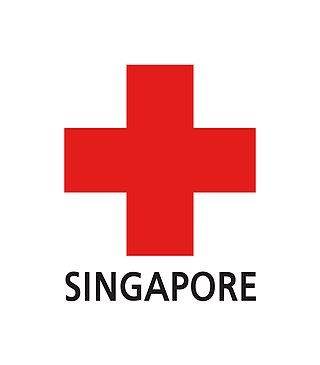
The Singapore Red Cross (SRC), formally the Singapore Red Cross Society, is a humanitarian aid and community services charity in Singapore. The SRC is a national member of the Federation of Red Cross and Red Crescent Societies (IFRC) and International Committee of the Red Cross (ICRC) and forms a part of the International Red Cross Movement.

Under the Geneva Conventions, the emblems of the International Red Cross and Red Crescent Movement are to be worn by all medical and humanitarian personnel and also displayed on their vehicles and buildings while they are in an active warzone, and all military forces operating in an active warzone must not attack entities displaying these emblems. The International Red Cross and Red Crescent Movement recognizes four protection emblems, three of which are in use: the Red Cross, the Red Crescent, the Red Lion and Sun, and the Red Crystal.
The Cyprus Red Cross Society is the only Red Cross society in Cyprus recognised by the International Red Cross and Red Crescent Movement. The Headquarters of the Society are located in Nicosia.

The Seville Agreement was an agreement drafted by the International Red Cross and Red Crescent Movement in 1997 to specify which Red Cross entity would take the lead role in different scenarios.

The International Committee of the Red Cross is a humanitarian organization based in Geneva, Switzerland, and is a three-time Nobel Prize Laureate. The organization has played an instrumental role in the development of rules of war and promoting humanitarian norms.
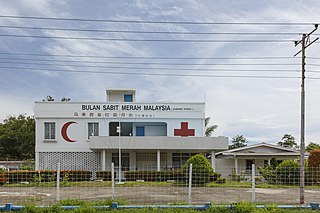
The Malaysian Red Crescent (MRC) is a voluntary humanitarian organization that seeks to promote humanitarian values, as well as provide service and public education in disaster management, as well as healthcare in the community. It is part of the International Red Cross and Red Crescent Movement.
There are a number of meanings for the term humanitarian. Here, humanitarian pertains to the practice of saving lives and alleviating suffering. It is usually related to emergency response whether in the case of a natural disaster or a man-made disaster such as war or other armed conflict. Humanitarian principles govern the way humanitarian response is carried out.
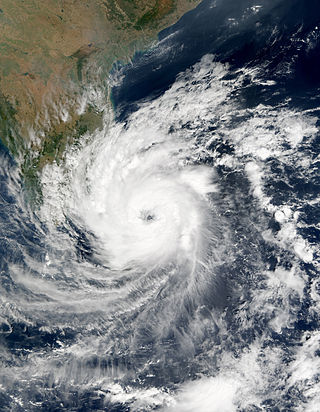
The 2000 Sri Lanka cyclone was the strongest tropical cyclone to strike Sri Lanka since 1978. The fourth tropical storm and the second severe cyclonic storm of the 2000 North Indian Ocean cyclone season, it developed from an area of disturbed weather on December 25, 2000. It moved westward, and quickly strengthened under favorable conditions to reach top wind speeds of 75 mph (121 km/h). The cyclone hit eastern Sri Lanka at peak strength, then weakened slightly while crossing the island before making landfall over southern India on December 28. The storm degenerated into a remnant low later that day, before merging with another trough on the next day.
His Excellency Mahinda Buddhadasa Samarasinghe is a former MP and the current Ambassador of Sri Lanka to the United States and Mexico and High Commissioner to Trinidad and Tobago.

The International Federation of Red Cross and Red Crescent Societies (IFRC) is a worldwide humanitarian aid organization that reaches 160 million people each year through its 191 member National Societies. It acts before, during and after disasters and health emergencies to meet the needs and improve the lives of vulnerable people. It does so independently and with impartiality as to nationality, race, gender, religious beliefs, class and political opinions.
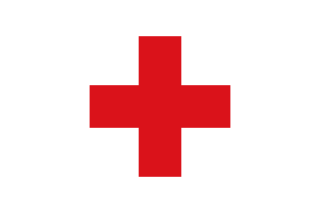
The Lebanese Red Cross (LRC) is a humanitarian organization and an auxiliary team to the medical service of the Lebanese Army. Its headquarters is in the Lebanese capital city of Beirut. Founded in 1945, the organization comprises a number of approximately 7,000 members/volunteers and 200 staff personnel. The society works with the International Federation and the ICRC, and on a bilateral basis with the Norwegian and the French Red Cross. The LRC also works with the relevant components of the Lebanese authorities, with UN agencies and NGOs.
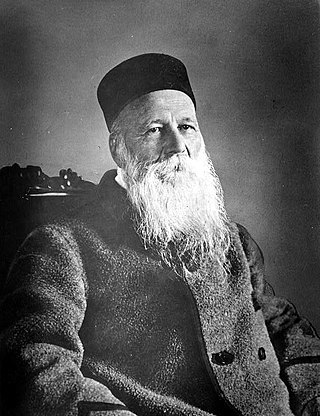
The Henry Dunant Medal is the highest award of the Red Cross Movement. It is named after Henry Dunant, the founder of the Red Cross Movement. The medal is presented every two years by the Standing Commission of the Red Cross and Red Crescent. This body represents the International Committee of the Red Cross, the International Federation of Red Cross and Red Crescent Societies and the various National Red Cross and Red Crescent Societies.

The Finnish Red Cross is an independent member of the International Federation of Red Cross and Red Crescent Societies, which is one of the biggest and best-known international organisations in the world and in the field of humanitarian aid. FRC has over 71,000 members and around 30,000 active volunteers in Finland. FRC consists of 12 regional chapters and 433 local branches throughout the country. The current General Secretary is Eero Rämö. At the end of 2022, the FRC employed 787 people, of which 204 worked at the headquarters in Helsinki.
The Red Cross Society of the Republic of China (Taiwan) (Chinese: 中華民國紅十字會), also known as Taiwanese Red Cross is the Red Cross Society of the Republic of China (Taiwan). The society is not recognized by the International Committee of the Red Cross (ICRC) because it does not meet all the conditions set out in the Statues of the Red Cross and Red Crescent Movement, and it is not a member of the International Federation of Red Cross and Red Crescent Societies. From its founding in 1904, to 1949, when the Kuomintang retreated to Taiwan, the society shared its history with the Red Cross Society of China. Both societies associate their origins with the founder, Shen Dunhe, a tea merchant.
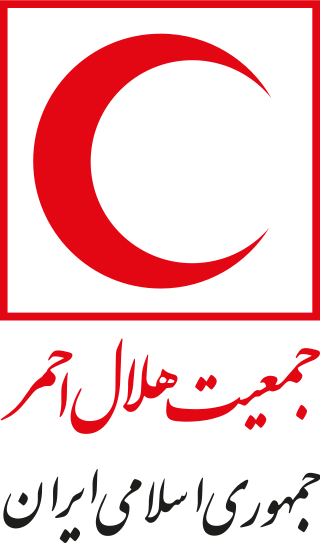
The Iranian Red Crescent Society (IRCS), officially the Red Crescent Society of the Islamic Republic of Iran is a non-governmental humanitarian organization in Iran. Founded as the Red Lion and Sun Society in 1922, it became affiliated with the International Federation of Red Cross and Red Crescent Societies (IFRC) in 1924 and changed its name and emblem in 1980, informing the international community of Hilal Ahmar adoption while assuming the right to adopt the former emblem in future.
The International Institute of Humanitarian Law (IIHL) is an independent, “non-profit, humanitarian association having social values as its objectives”, founded in 1970 in Sanremo, Italy. Its headquarters are situated in Villa Ormond, while a liaison office of the Institute is established in Geneva, Switzerland.
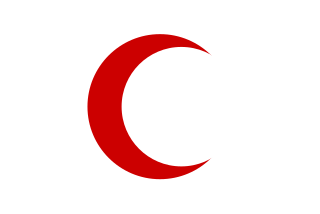
The Syrian Arab Red Crescent (SARC) is a humanitarian nonprofit organization. Its headquarters are in the Syrian capital city of Damascus. The society was founded in Damascus, Syria in 1942, and admitted to the International Committee of the Red Cross (ICRC) in 1946. Some of founders included were Abdul-Kader Zahra, Jamil Kabara, Sami Al-Meedani, Shafiq Diyab, Mustafa Shawky, Ahmed Kadary, Wade Saydawy, Mounib Rifai, and others. The society is part of the International Federation and has been recognized by the ICRC. The SARC has 14 branches all over Syria and 75 sub-branches. Volunteer based, the SARC has around 11,000 trained volunteers that work in the areas of first aid, first aid training, disaster response and relief, psycho-social support, and health in general. SARC also partners with local charity organizations and works with the relevant components of the Syrian community, with UN agencies and NGOs.
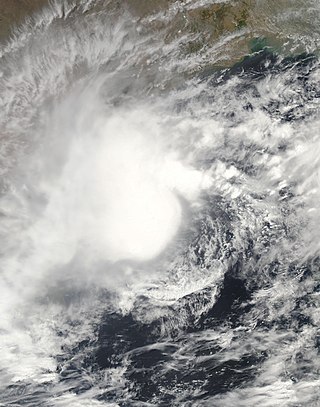
In May 2003, a tropical cyclone officially called Very Severe Cyclonic Storm BOB 01 produced the worst flooding in Sri Lanka in 56 years. The first storm of the 2003 North Indian Ocean cyclone season, it developed over the Bay of Bengal on May 10. Favorable environmental conditions allowed the system to intensify steadily while moving northwestward. The storm reached peak maximum sustained winds of 140 km/h (85 mph) on May 13, making it a very severe cyclonic storm according to the India Meteorological Department (IMD), which is the official Regional Specialized Meteorological Center for the basin. The cyclone drifted north over the central Bay of Bengal, gradually weakening due to heightened wind shear. Turning eastward, the storm deteriorated to a deep depression on May 16 before it curved northeastward and re-intensified into a cyclonic storm. It came ashore in western Myanmar and dissipated over land the following day.
References
- ↑ "Colin Powell visits Red Cross relief centre in Galle". International Federation of Red Cross and Red Crescents Societies. January 7, 2005. Retrieved 2009-01-25.
- ↑ "750 families receive relief from Red Cross". ReliefWeb. February 22, 2008. Retrieved 2009-01-25.
- 1 2 3 4 5 6 "Red Cross constructs national disaster management centre". TamilPress. January 10, 2006. Archived from the original on October 6, 2011. Retrieved 2009-01-25.